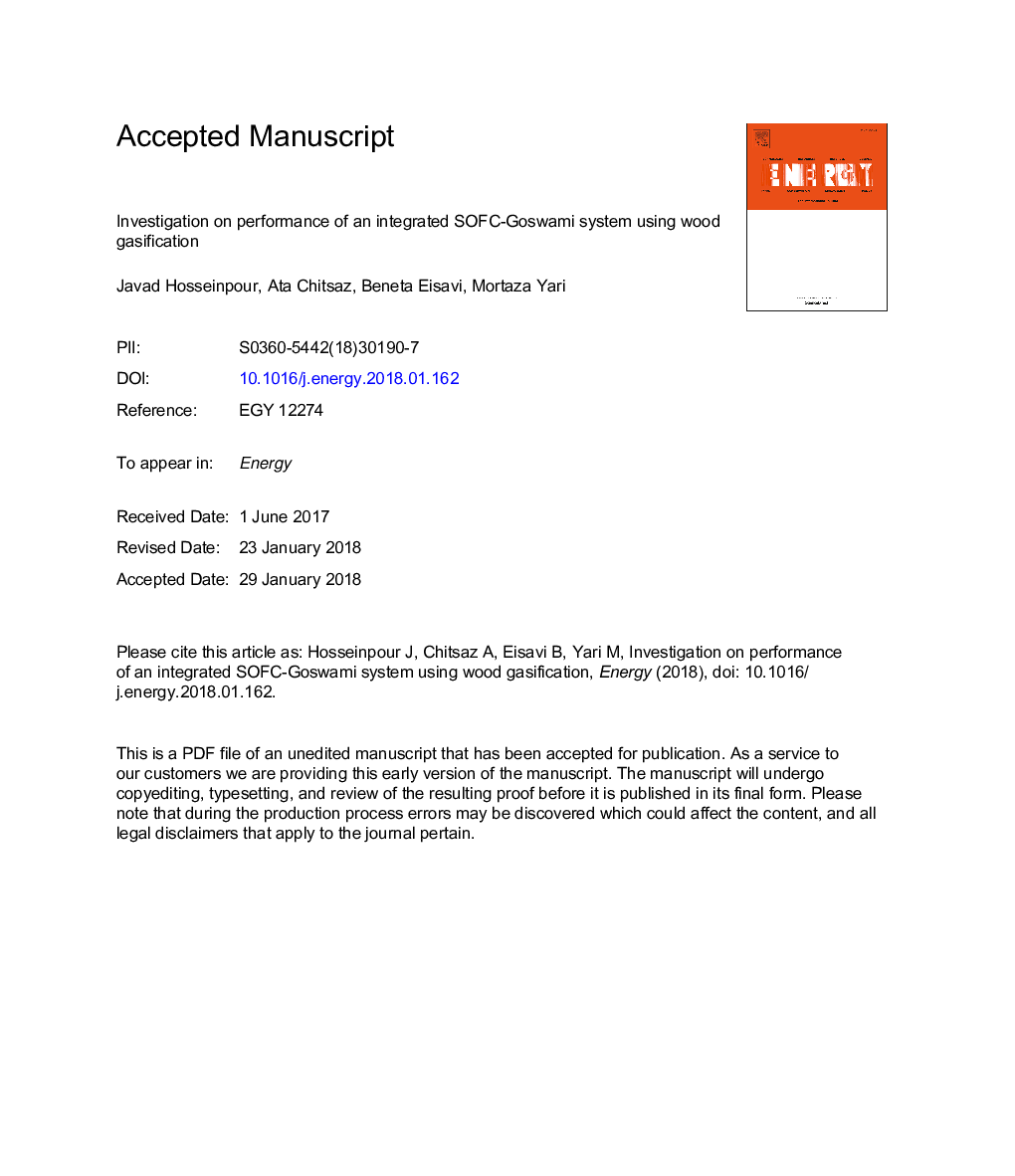| Article ID | Journal | Published Year | Pages | File Type |
|---|---|---|---|---|
| 8072035 | Energy | 2018 | 64 Pages |
Abstract
A new cogeneration system is proposed consisting of biomass gasification fed by wood, a solid oxide fuel cell (SOFC) and a Goswami cycle, which is a combination of a Kalina and an absorption refrigeration cycle. The Goswami cycle acts as a bottoming cycle to recover waste heat of the SOFC in order to produce cooling effect along with additional electricity. The combined cooling and power (CCP) system is modeled via Engineering Equation Solver (EES) and assessed in terms of energy (or first law) efficiency and exergy (or second law) efficiency. The effects on the system performance of varying several key parameters are examined via sensitivity assessments. It is found that raising the SOFC current density increases the produced electricity generation and cooling, but reduces the energy and exergy efficiencies of the system. It is also found that, as the SOFC inlet flow temperature and the turbine inlet pressure increase, the electricity generation rate and the energy and exergy efficiencies of the system rise to the optimal values of 481.6â¯kW, 60.2% and 34.7%, respectively, and then decrease. The exergy analysis also demonstrates that the gasification reactor, the boiler and the second air heat exchanger are the main irreversible components.
Keywords
Related Topics
Physical Sciences and Engineering
Energy
Energy (General)
Authors
Javad Hosseinpour, Ata Chitsaz, Beneta Eisavi, Mortaza Yari,
